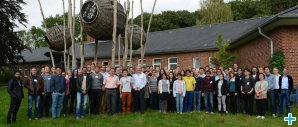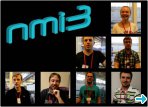Report on the HZG school 2015
This year the school organised by the Helmholtz-Zentrum Geesthacht counted with 61 participants from 9 different countries from all over Europe.
18/12/2015
Source: HZG
Scope
The school provided a systematic overview of the use of neutrons and photons in the field of engineering materials science. The program touched all “state-of-the-art” scattering and imaging techniques using the two probes in a focused three days course complemented by a two days practical at DESY. The school was the continuation of five very successful autumn schools with the same title in 2005, 2007, 2009, 2011 and 2013.
Students
61 participants from 9 different countries from all over Europe (including 33 from Germany and 12 from Sweden) participated in the school. These 61 students were chosen by a committee out of 127 applicants.
Organisation
The school took place from 21st to 25th of September 2015 in Ammersbek near Hamburg. Organizers of the school were HZG, CAU Kiel, University Hamburg, Linköping University (Sweden), Chalmers University of Technology (Sweden), University Göttingen, University Bremen, HZB, TU Berlin and MU Leoben (Austria) with financial support of the EU program NMI3 II, the Röntgen Ångström Cluster and the Virtual Institute of the Helmholtz Association “New X-ray Analytic Methods in Material Science” (VI-NXMM). The language of the school was English.
Programme
17 talks of the theoretical course were given by internationally renowned experts with topics in the fields “materials and processes”, “sources” and “methods” (scattering, imaging). The last part “advances techniques” contained a view into current research and neighbouring fields using photons and neutrons like single-grain diffraction methodologies, in-situ studies of welding processes, novel in-situ techniques for studies of model catalysts and observation and understanding of phase formation and transformation in multinary TiAl alloys by in situ synchrotron diffraction experiments. In addition a short introduction about NMI3 was given. In a students’ presentation session about 20 Ph.D. students presented the concept of their work in 3 minutes talks.
In the following two day practical at the HZG outstation at DESY the students were introduced to the instruments of the German Engineering Materials Science (GEMS) Centre at DESY. At the HEMS and IBL beamlines and other instruments (diffractometer, tomography and small-angle scattering instruments) as well as at several data evaluation stations (neutron and X-ray data) the students were taught in measuring and evaluation procedures in the fields of texture and residual stress analysis as well as microtomography, small-angle scattering and the fabrication of X-ray lenses.
Enough time was reserved in the program for scientific discussions between participants and lecturers. The feedback of the students was very positive. As social event a boat trip on the river Elbe in Hamburg with dinner on the ship was organised.
It is planned to organise the next school in Ismaning and Garching near Munich together with the MLZ on 10.-14.10.2016 and again in Hamburg in 2017.
This school is part of NaMES (Neutron and Muon European Schools). It has received NMI3 support through the NMI3 Education activities.
Related Pages and News
Call for proposals for funding of neutron and muon introductory schools
The deadline for applying for funding for Neutron or Muon Introductory Schools is January 24. The schools will be supported by the SINE2020 project.
NMI3 List of Supported Schools
NMI3 supports a group of selected European schools. For further details about each school, please go to this page .
Videos: NMI3 School Series
We have a number of videos where participants in NMI3 supported schools tells us about their experience and opinion about the school programme and activities. Go to our YouTube page.
e-learning: Virtual Neutrons for Teaching
An NMI3 collaboration is developing an e-learning platform about neutron scattering for university students, the Virtual Neutrons for Teaching platform. It will go online very soon and will be available for free! Read more.






